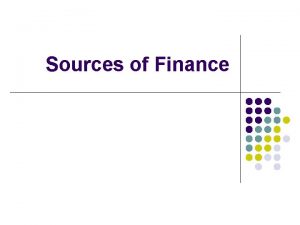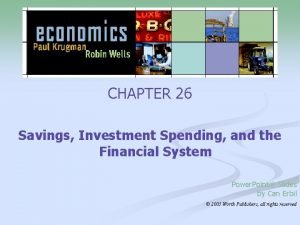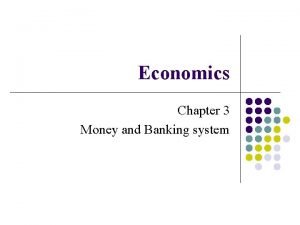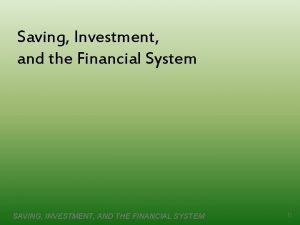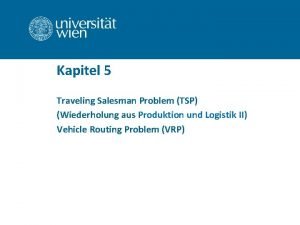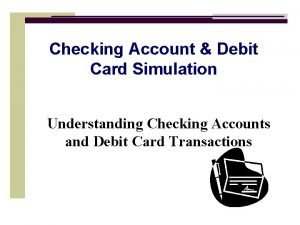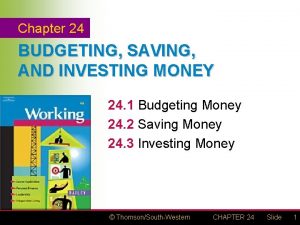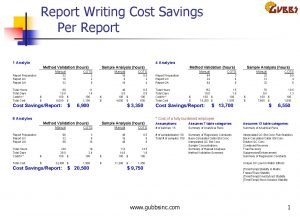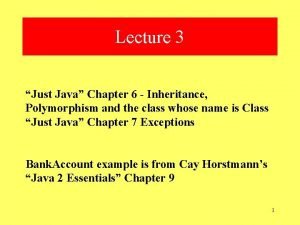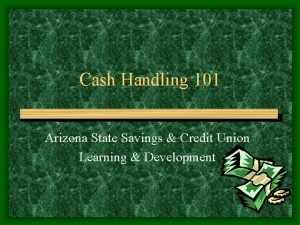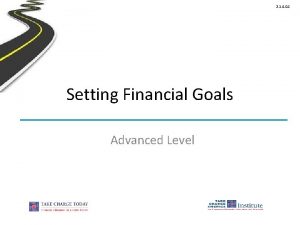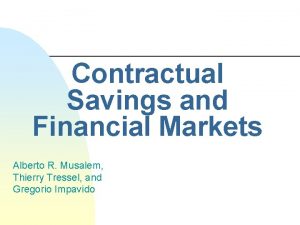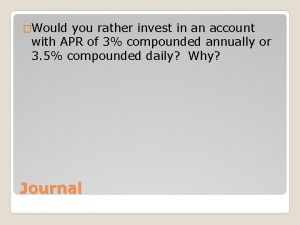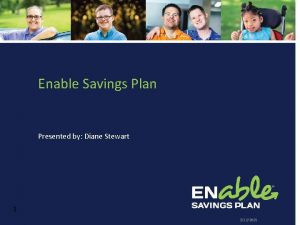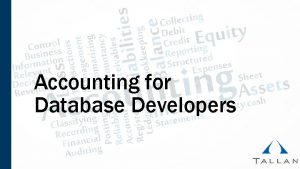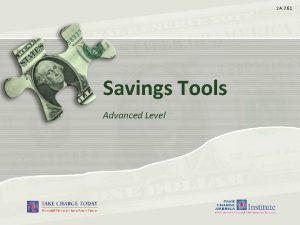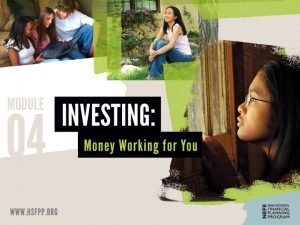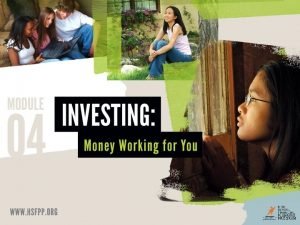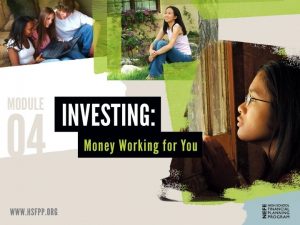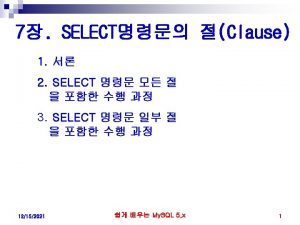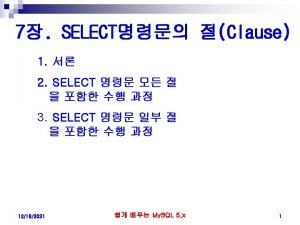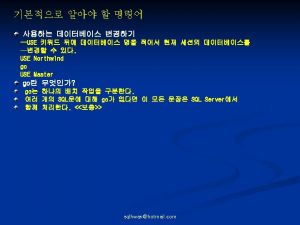Put Savings to Work SELECT SAVINGS OPTIONS THAT


























































- Slides: 58


Put Savings to Work SELECT SAVINGS OPTIONS THAT WORK FOR YOU

What Does it Mean to be Wealthy? 2 © 2012 National Endowment for Financial Education | Lesson 4 -1: Put Savings to Work

Preview Today we will answer these questions: • What is the difference between saving and investing? • What are the different ways I can invest money? • How do I get started with investing? Use what you learn today to weigh the risks and rewards of investing. 3 © 2012 National Endowment for Financial Education | Lesson 4 -1: Put Savings to Work

Meet Whitney and Justin Whitney– senior • Works part-time • Spends most of her money on clothes and going out with friends • Doesn’t stick to her savings plan Justin– 8 th grader • Earns money from occasional odd jobs in neighborhood • Father was recently laid off from job • Is saving money for college 4 © 2012 National Endowment for Financial Education | Lesson 4 -1: Put Savings to Work

Save vs. Invest Alike Plan to use money later Save Keep ownership Alike Save ? Store money somewhere to avoid spending now ? Original amount always available (unless stolen, lost, or destroyed) expectation that it will make ? ? a profit (Ex: stock, rental property, business) Not all investments are insured No guarantee that original amount will be available if value of investment drops (except bank accounts) © 2012 National Endowment for Financial Education | Lesson 4 -1: Put Savings to Work Insured if kept in a bank account 5 Invest Use money with

Millionaire Myth #1 – True or False? Millionaires usually work in sports, entertainment or lead gigantic Fortune 500 companies. 8 Athletes and entertainers are notorious for squandering their money until they’re broke. Actually, half of all millionaires are selfemployed or own a business. Source: Thomas J. Stanley, Ph. D. and William D. Danko, Ph. D. The Millionaire Next Door: The Surprising Secrets of America's Wealthy, 1996 6 © 2012 National Endowment for Financial Education | Lesson 4 -1: Put Savings to Work

Millionaire Myth #2 – True or False? Millionaires made their fortunes the easy way— inheriting it. 8 Only 20 percent of millionaires inherited part of their money. And half of those inherited less than 10 percent of their assets. 1 8 In fact, 76 percent of millionaires said “smart investing” is one of the top three factors contributing to their financial success. The other two critical elements are hard work and education. 2 1 Thomas J. Stanley, Ph. D. and William D. Danko, Ph. D. The Millionaire Next Door: The Surprising Secrets of America's Wealthy, 1996 2 Spectrem 7 Group, 2012 Affluent Market Insight © 2012 National Endowment for Financial Education | Lesson 4 -1: Put Savings to Work www. millionairecorner. com/article/smart-investing

Millionaire Myth #3 – True or False? Millionaires spend a lot of time managing their finances and trading stocks. 8 Most spend less than six minutes per day on finances. 1 They’re too busy making more money to invest! And they invest for the long-term. About 75 percent buy and hold stocks more than five years. Nearly 40 percent hold them 10 years or more. 2 1 Ric Edelman, Ordinary People, Extraordinary Wealth: The 8 Secrets of How 5, 000 Ordinary Americans Became Successful Investors--and How You Can Too, 2000 2 Chuck Carlson, 8 Steps to 7 Figures: The Investment Strategies of Everyday Millionaires and How You Can Become Wealthy Too, 2001 8 © 2012 National Endowment for Financial Education | Lesson 4 -1: Put Savings to Work

Millionaire Myth #4 – True or False? Millionaires spend tons of money on cars, boats, and other luxury items. 8 Wealth is not what you make—it’s what you keep. True millionaires focus on acquiring assets that will make them money, such as real estate, investments, and their businesses. That’s why so many drive Fords and Toyotas. Source: Thomas J. Stanley, Ph. D. and William D. Danko, Ph. D. The Millionaire Next Door: The Surprising Secrets of America's Wealthy, 1996 9 © 2012 National Endowment for Financial Education | Lesson 4 -1: Put Savings to Work

Millionaire Myth #5 – True or False? Millionaires never have to worry about having enough money. 8 Nearly 42 percent of millionaires still don’t feel wealthy. They say they’d need investing assets of $7. 5 million to feel truly wealthy and stop worrying. The more you have, the more you seem to need to feel financially secure. Source: Fidelity, Millionaire Outlook, March 2011 www. fidelity. com/inside-fidelity/individual-investing/millionaire-outlook-2011 10 © 2012 National Endowment for Financial Education | Lesson 4 -1: Put Savings to Work

3 Ways to Build Wealth 1. Make enough money to cover essential expenses and have something left to save and invest. 2. Have a plan to save and use part of your income to invest. 3. Invest to put money to work for you. 11 © 2012 National Endowment for Financial Education | Lesson 4 -1: Put Savings to Work

Sources of Income for Teens Allowance ? Job Sources of Income Earned Interest Gift Money 12 Sell Something ? © 2012 National Endowment for Financial Education | Lesson 4 -1: Put Savings to Work

Windfalls What are your windfalls? Use unexpected increases in cash to save and invest. 13 © 2012 National Endowment for Financial Education | Lesson 4 -1: Put Savings to Work

Savers are Related to Borrowers Savers Borrow money Deposit money Pay Int Credit Union ere Bank st Store money Lend money 14 t n I y t s e er Pa © 2012 National Endowment for Financial Education | Lesson 4 -1: Put Savings to Work

Simple Interest 15 © 2012 National Endowment for Financial Education | Lesson 4 -1: Put Savings to Work

Compound Interest 16 © 2012 National Endowment for Financial Education | Lesson 4 -1: Put Savings to Work

Watch it Grow Let’s say you have $1, 000 saved in an account that earns 3 percent interest once a year. What is the balance and the compounded interest earned each year over five years? 17 The Mighty Power of Compounding Year Interest Earned Beginning Ending Balance $1, 000. 00 1 $30. 00 ? $1, 030. 00 ? 2 $30. 90 ? $1, 060. 90 ? 3 $31. 83 ? $1, 092. 73 ? 4 $32. 78 ? $1, 125. 51 ? 5 $33. 77 ? $11, 59. 28 ? Without any physical effort on your part, your money has “worked” to earn you how much interest? © 2012 National Endowment for Financial Education | Lesson 4 -1: Put Savings to Work

Interest-Earning Savings Options Bank or Credit Union • Savings Account • Money Market Deposit Account (MMDA) • Certificate of Deposit (CD) www. treasurydirect. gov • U. S. Savings Bond 18 © 2012 National Endowment for Financial Education | Lesson 4 -1: Put Savings to Work

Challenge Assignment 4 -A It Pays to Shop Around Use the DECIDE steps to compare and select savings options that fit your current situation. 19 © 2012 National Endowment for Financial Education | Lesson 4 -1: Put Savings to Work

How Investing Works START INVESTING NOW TO REAP THE BENEFITS

It costs how much? I remember when ____ used to cost only $____. 21 © 2012 National Endowment for Financial Education | Lesson 4 -2: How Investing Works

Preview Today we will answer these questions: • When should I start investing? • What are some guidelines to follow when investing? • How do I buy stock? Use what you learn today to make decisions about stock investments. 22 © 2012 National Endowment for Financial Education | Lesson 4 -2: How Investing Works

Inflation Same Item, Different Price $ 30 $ 27 $ 25 $ 20 $ 15 $ 10 $5 $- 2000 23 © 2012 National Endowment for Financial Education | Lesson 4 -2: How Investing Works 2012

Time Value of Money (TMV) Yesterday’s �Tomorrow’s 24 © 2012 National Endowment for Financial Education | Lesson 4 -2: How Investing Works

Pay Raise for Whitney currently earns $7. 25 an hour working part time. During her performance review meeting her supervisor informed her that she has earned a $. 50 increase in hourly pay. • Is Whitney’s wage increase enough to keep up with inflation? • What is the minimum increase per hour she needs to at least match the average annual rate of inflation at three percent? 25 © 2012 National Endowment for Financial Education | Lesson 4 -2: How Investing Works

Pay Raise for Derrick Justin’s older brother, Derrick, now earns an annual salary of $28, 080. He wants to ask about a raise at his next performance review. • What is the minimum amount of salary increase Derrick should request to keep up with the average annual rate of inflation? 26 © 2012 National Endowment for Financial Education | Lesson 4 -2: How Investing Works

Invest Now or Later? Which is better? A. Start investing a little now. B. Wait a while to invest more later. 27 © 2012 National Endowment for Financial Education | Lesson 4 -2: How Investing Works

Reasons to Invest An income investment provides expected earnings, usually in predictable amounts. • Earned interest – payment received in return for use of your money • Dividends – share of profits some companies pay to their stockholders • Rent payments – received from 28 people or companies in return for using your property Growth investments are purchased because of the potential that the value will increase over time; an unpredictable amount of money is received when the investment is sold. • • Real estate Business Crops Precious metals © 2012 National Endowment for Financial Education | Lesson 4 -2: How Investing Works

Stock Talk Businesses sell shares of stock to raise money to run the business. Someone who buys stock owns a portion of a business, depending upon how many shares are bought. Guess doesn’t the name ofon these four companies: A shareholder take responsibilities of running the company, � � but a company employee might happen to� be a shareholder. GE NFLX F DPS A shareholder is allowed one vote per share when electing board members at shareholder meetings. Company management might decide to share part of the profits by paying dividends to shareholders (cash or shares of stock). The price of stock shares varies based on what people are willing to pay. 29 Each stock has a unique ticker symbol © 2012 National Endowment for Financial Education | Lesson 4 -2: How Investing Works

How to Buy Stock 30 Select Broker Place bid (or ask) order with broker to buy (or sell) quantity at a certain price. Place order for broker to complete trade through an exchange Keep record of buy (or sell) for tax reporting Deposit Cash to open a brokerag e account Decide what you want to buy (or sell) Pay transactio n fee to broker at time of buy (or sell) Pay attention to stock news and price © 2012 National Endowment for Financial Education | Lesson 4 -2: How Investing Works

Pick a Stock to Study What do you like? Buy? Use? What products and industries are familiar to you? 31 What do consumer s need and use? What are industry trends? © 2012 National Endowment for Financial Education | Lesson 4 -2: How Investing Works

Stock Study • Do your own homework. • Know what you are buying. • Study company data and news to answer these questions: – What is the current “state of affairs”? – Are there any “red flags” that indicate the company has issues? – Does the company have a record of consistent growth? (earnings per share, revenue, dividends) – – – Is the company making money? Can the company cover its debt? How does the company compare with competitors? How does the company compare with industry trends? How does the current price compare with recent trends? Disclaimer: The basic guidelines offered here are presented to help get you started on your own stock study and do not guarantee positive results. 32 © 2012 National Endowment for Financial Education | Lesson How Investing Works You are encouraged to continually learn more about investing and 4 -2: seek professional guidance as you engage in investing decisions.

Choosing Investments ESTABLISH INVESTING RULES © 2012 National Endowment for Financial Education | Lesson 4 -3: Choosing Investments

Nike Shoes or Nike Stock? Air Jordan XVIII Shoes Nike Stock Price Hypothetical Nike Stock Portfolio (15 shares) January 2003 $175 new $11. 53/share $172. 95 January 2013 $60 -$250 Market Price estimates $51. 84/share $777. 60+ (does not include quarterly dividends) Year + If the dividends paid each quarter had been reinvested, the total number of shares owned would be greater that 15 shares after 10 years. 34 © 2012 National Endowment for Financial Education | Lesson 4 -3: Choosing Investments

Preview Today we will answer these questions: • Are there other ways to invest other than buying stock? • Isn’t investing risky? • How much risk am I willing to take when investing? • Are there ways to reduce the possibility that I’ll lose money on my investments? Use what you learn today to set up rules for investing. 35 © 2012 National Endowment for Financial Education | Lesson 4 -3: Choosing Investments

Justin’s Investors Which investor is a “shareholder” in Justin’s business venture? Is the shareholder guaranteed any return on his investment? What is the role of Justin’s dad? What do you think are the chances that either of the investors will earn a return on his investment? Would you have invested in Justin’s business venture either as a stockholder or a bondholder? Why or why not? 36 © 2012 National Endowment for Financial Education | Lesson 4 -3: Choosing Investments

37 Start-Up Stock Certificate of Deposit © 2012 National Endowment for Financial Education | Lesson 4 -3: Choosing Investments Potential Risk of Loss Potential Return Reward Risk Meter

The Language of Investing Asset something of value that can be turned into cash Examples: stock, home, lake-front property, business Liability something owed to another person Examples: loan, rent Rate of Return degree to which an asset gains (or loses) value over a given period of time Examples: APY interest on savings, stock value increase/decrease Risk uncertainty of achieving a desired result 38 © 2012 National Endowment for Financial Education | Lesson 4 -3: Choosing Investments

Investment FAQs Bonds Mutual Funds Real Estate Collectibles Business Futures Index Funds Precious Metals 39 • How do I invest in __? • Why would someone want to invest in __? • What are the costs to invest in __? • What is the typical return (range) on this type of investment? • Is this considered a low, medium, or high investment risk? Why? © 2012 National Endowment for Financial Education | Lesson 4 -3: Choosing Investments

Take the Risk Your risk tolerance depends on … – When you need the money (short-term or long-term) – Your financial goals – Your ability to live with any investing decisions with unpleasant consequences Tame the risk – Be sure you can cover your necessary financial needs – Know what you are getting into before you invest – Invest in different types of investments 40 © 2012 National Endowment for Financial Education | Lesson 4 -3: Choosing Investments

Diversify to Tame Risk Don’t put all your eggs in one basket. • Invest in a combination of asset categories: – More than one asset (Example: not all Facebook stock) – Variety of assets (Example: not just Certificates of Deposit) • Mix investments within an asset category: – Different industries (Example: not all retail) – Different-sized companies (Example: not all small) Divide investments among several “baskets”. 41 © 2012 National Endowment for Financial Education | Lesson 4 -3: Choosing Investments

Assignment Create your own investment policy statement that reflects your personal values and risk tolerance for saving and investing. Write your statement as a tweet message in 140 characters or less. 42 © 2012 National Endowment for Financial Education | Lesson 4 -3: Choosing Investments

Investing Strategy SET GOALS FOR SAVING AND INVESTING © 2012 National Endowment for Financial Education | Lesson 4 -4: Investment Strategy

3 Steps to Build Wealth 1. Make enough money. 2. Have a plan to save and invest. 3. Invest. 44 © 2012 National Endowment for Financial Education | Lesson 4 -4: Investment Strategy

Preview Today we will answer these questions: • What are the basic guidelines for investing? • Don’t I need a massive amount of money to invest? • When I finally have my own investments, I can just sit back and watch my assets grow in value, right? Use what you learn today to set goals for saving and investing. 45 © 2012 National Endowment for Financial Education | Lesson 4 -4: Investment Strategy

Wealthy Habits 1. Take on an “earn to invest” mentality. 2. Focus on your lifestyle and financial goals. 3. Persevere—Don’t be a quitter. 4. Let your mistakes be lessons. 5. Look for value. 46 © 2012 National Endowment for Financial Education | Lesson 4 -4: Investment Strategy

Wealthy Habits 6. Be the one who controls your money. 7. Avoid unnecessary fees. 8. Believe in yourself. 9. Make strategic risks. 10. Be generous. 47 © 2012 National Endowment for Financial Education | Lesson 4 -4: Investment Strategy

Build Wealth … Step #1 1. Make enough money - have something left over to save for investing - cover your essential and necessary expenses - plug the spending leaks - take advantage of matching funds from employers - evaluate your situation every year 48 © 2012 National Endowment for Financial Education | Lesson 4 -4: Investment Strategy

Build Wealth … Step #2 2. Have a plan to save and invest. - set long-term saving and investing goals - decide your best investing options and strategies - include saving and investing in spending plan - take advantage of payroll savings plans - contribute to tax-advantage savings plans 49 © 2012 National Endowment for Financial Education | Lesson 4 -4: Investment Strategy

The Oracle of Omaha Famous Investor, Warren Buffet’s investment philosophy: Invest in top quality, profitable companies with products you understand, good managers, and lots of cash to reinvest in the company… and hold them forever. 50 © 2012 National Endowment for Financial Education | Lesson 4 -4: Investment Strategy

Build Wealth … Step #3 3. Invest to put money to work for you. - know what you are investing in - think long term - take some risk to beat inflation - pay attention to your risk tolerance - take advantage of compound interest - diversify your investments - reinvest all earnings - dollar cost average 51 © 2012 National Endowment for Financial Education | Lesson 4 -4: Investment Strategy

Dollar Cost Average • Invest a set amount of money at regular • • • intervals. Start receiving benefits of compounding. Stop worry about investing at high or low prices. Lower the cost per share. Activity 4. 8 Dollar Cost Averaging Is the current value of Whitney’s investment more (>) or less (<) than what she paid? 52 © 2012 National Endowment for Financial Education | Lesson 4 -4: Investment Strategy

7 Paths to Pure Trouble Trusting others blindly Falling for fairy tales Relying on past performa nce Borrowi ng to invest Getting emotional about investmen ts 53 Flippin g stocks © 2012 National Endowment for Financial Education | Lesson 4 -4: Investment Strategy Holding only one investm ent

Rights and Responsibilities of Investing You have the right to … You have the responsibility to … • Select your own or change your advisor • Be informed. Read all literature, including the investment prospectus before making decisions. or brokerage firm. • Know if your advisor has a conflict of interest. • Verify the credentials of the person or firm who will handle your investments. • Receive timely and accurate information. • Read and keep your statements. • Set and communicate your investing • Receive the best recommendation goals. based on your stated investing goals. • Be treated ethically. • Report investing problems regarding brokers or brokerage firms. • Have your financial data protected. 54 • • • Report any unauthorized trades. Promptly report problems to regulators. Protect your financial data. Pay taxes on any earnings. Carefully consider risks, fees, and objectives before making decisions. © 2012 National Endowment for Financial Education | Lesson 4 -4: Investment Strategy

Who’s Got Your Back? The Cops • Securities and Exchange Commission (SEC) • Financial Industry Regulatory Authority, INC (FINRA) • state securities regulators The Clean-Up Crew • Federal Deposit and Insurance corporation (FDIC) • Securities Investor Protection Corporation (SIPC) 55 © 2012 National Endowment for Financial Education | Lesson 4 -4: Investment Strategy

Challenge 4 -B Set personal savings and investing goals: - short-term - medium-term - long-term 56 © 2012 National Endowment for Financial Education | Lesson 4 -4: Investment Strategy

 Put options
Put options Tìm độ lớn thật của tam giác abc
Tìm độ lớn thật của tam giác abc Sau thất bại ở hồ điển triệt
Sau thất bại ở hồ điển triệt Thể thơ truyền thống
Thể thơ truyền thống Con hãy đưa tay khi thấy người vấp ngã
Con hãy đưa tay khi thấy người vấp ngã Thơ thất ngôn tứ tuyệt đường luật
Thơ thất ngôn tứ tuyệt đường luật Tôn thất thuyết là ai
Tôn thất thuyết là ai Phân độ lown ngoại tâm thu
Phân độ lown ngoại tâm thu Chiến lược kinh doanh quốc tế của walmart
Chiến lược kinh doanh quốc tế của walmart Gây tê cơ vuông thắt lưng
Gây tê cơ vuông thắt lưng Block nhĩ thất độ 2 type 1
Block nhĩ thất độ 2 type 1 Select * from select
Select * from select Select * from select
Select * from select Select * from select
Select * from select Select * from select
Select * from select Put out the light, and then put out the light
Put out the light, and then put out the light You put your right hand in
You put your right hand in Work or effort being put into a mechanism
Work or effort being put into a mechanism Savings and loan associations
Savings and loan associations Advantages of savings
Advantages of savings 2-3 savings accounts answers
2-3 savings accounts answers Savings-investment spending identity
Savings-investment spending identity Demand deposit vs savings deposit
Demand deposit vs savings deposit Heat pump balance point
Heat pump balance point Saving
Saving 2-opt verfahren
2-opt verfahren 3-1 savings accounts worksheet answers
3-1 savings accounts worksheet answers Janssen carepath savings program
Janssen carepath savings program Budgeting and savings
Budgeting and savings Chapter 30 savings accounts
Chapter 30 savings accounts Define inheritence
Define inheritence Savings and loan associations
Savings and loan associations Bny mellon health savings account
Bny mellon health savings account Savings trial fund
Savings trial fund Dream ahead 529
Dream ahead 529 Directions to 529
Directions to 529 Changes to the savings allownace in 2018/19
Changes to the savings allownace in 2018/19 Texas 529
Texas 529 Cost savings report example
Cost savings report example Bank account java program using inheritance
Bank account java program using inheritance Savings and loan associations
Savings and loan associations Disadvantages of rsa retail savings bonds
Disadvantages of rsa retail savings bonds Icici pru savings suraksha
Icici pru savings suraksha Ess scheme nsw
Ess scheme nsw Icici pru savings suraksha
Icici pru savings suraksha Arizona state savings and credit union
Arizona state savings and credit union Nestinsight
Nestinsight Types of production costs
Types of production costs 529 plan montana
529 plan montana A measurable savings goal spells out ________.
A measurable savings goal spells out ________. Contractual savings institutions
Contractual savings institutions Future value annuity formula
Future value annuity formula Iphil savings and credit cooperative
Iphil savings and credit cooperative Ashley is comparing three investment accounts
Ashley is comparing three investment accounts Enable savings plan
Enable savings plan Asset liabilities equity
Asset liabilities equity Savings tools definition
Savings tools definition Contract savings
Contract savings Retirement savings percentile
Retirement savings percentile



















